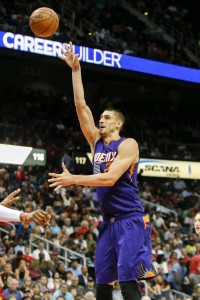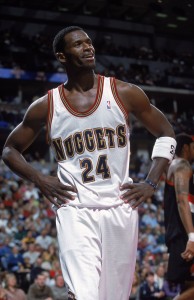Here’s a breakdown of what we know about the situation, and when we can expect resolution:
Didn’t the Cavs already know what condition Thomas’ hip was in? Why are they having second thoughts now?
According to multiple reports, the Celtics were forthright about Thomas’ condition, and the Cavs don’t feel as if Boston tried to deceive them. However, Cleveland doctors are more apprehensive than the Celtics’ doctors are about Thomas’ ability to make a full recovery and avoid re-aggravating the injury.
As Adrian Wojnarowski of ESPN wrote on Tuesday, the two teams shared medical information before completing the deal. However, Cavaliers officials “have made the case” that the Celtics understated the scope of Thomas’ injury, and were overly optimistic about his return timetable. For their part, the Celtics believed that included the Nets’ 2018 first-round pick without any protections made up for the uncertainty surrounding Thomas’ health, Wojnarowski writes.
Thomas spoke to ESPN on Tuesday and expressed plenty of optimism about his recovery, suggesting he expects to return as strong as ever and adding that nothing he’s heard from doctors and hip specialists has given him any reason not to believe that: “It’s out of my control. I just want to talk about what I can control, and I know that this [hip] won’t be a problem into the future.”
Still, according to ESPN’s Zach Lowe, sources say that if Thomas’ recovery doesn’t progress quite as smoothly as hoped, there’s at least a slight chance he could miss most of the 2017/18 season, which would be a disaster for the Cavs. That’s why Cleveland is seeking further compensation.
So what are the Cavs looking for from the Celtics?
An earlier report indicated that the Cavs may ask for Jaylen Brown or Jayson Tatum to be included in the deal, but that was a non-starter. Wojnarowski’s latest report suggests that Cleveland is “determined” to land an extra first-round pick from Boston, and the Celtics have no shortage of extra picks they could offer. In addition to all their own future selections, the C’s also have future first-rounders from the Clippers, Grizzlies, and either the Lakers, Sixers, or Kings.
Still, Boston figures to resist just handing over an extra first-rounder, since those picks would be valuable currency in another trade down the road. The discussions between the Celtics and Cavs have also included second-round considerations, sources tell Wojnarowski.
What happens if the Celtics and Cavs don’t agree on the added compensation?
In that scenario, the Cavs would have two choices: Either accept the deal under its original terms or void it entirely and go back to the drawing board. Even though the two teams announced the trade last week, it could be rescinded by the Cavs if they determine that Thomas failed his physical.
When is a decision due?
The current deadline is Thursday morning at 9:00am central time, so the Cavs and Celtics have 24 hours to work something out. However, if both sides agree to it, that deadline could be pushed back.
Do the Cavs have any good alternatives for Irving if they back out of this deal?
As many NBA reporters have written this week, both the Cavaliers and Celtics have incentive to figure out how to make this deal work for both sides. Thomas, Crowder, and Zizic likely wouldn’t be overly thrilled to return to Boston after the C’s traded them away. The situation would be a little different in Cleveland, since Irving explicitly requested a trade, but that 2018 Nets selection is probably the best draft pick the Cavs could acquire in an Irving deal, so giving it up would be difficult to swallow.
In a story for ESPN today, Zach Lowe explored the Cavs’ alternatives to Boston’s offer for Irving, suggesting that the Celtics’ package is probably the most attractive one out there, even taking into account some uncertainty regarding Thomas’ hip. Here are the other potential trade partners Lowe discusses:
- Bucks: Per Lowe, Milwaukee offered a package centered around Khris Middleton and Malcolm Brogdon, but didn’t put their 2018 first-round pick on the table. Even if the Bucks were to do so, that pick figures to be a mid to late first-rounder.
- Suns: Phoenix has been unwilling all along to include Josh Jackson, and may not give up its unprotected 2018 first-rounder, so there’s “minimal” Irving buzz surrounding the Suns.
- Timberwolves: They’re a wild card until Andrew Wiggins signs the five-year max extension on the table for him, according to Lowe.
- Nuggets: Lowe views Denver as the strongest potential threat if the Celtics deal falls through, since the club could offer Wilson Chandler, Jamal Murray, and at least one first-round pick. The Nuggets’ 2018 first-rounder might not be a top-10 selection, but the West will be competitive and Denver isn’t a guaranteed playoff team.
- Other likely lottery teams like the Kings, Hawks, Pacers, and Bulls don’t appear to have made offers for Irving, per Lowe.
What’s the most likely outcome?
The Cavs haven’t really tipped their hand yet, but it’s hard to imagine rookie general manager Koby Altman deciding to go back to square one on Irving. My best guess is that the Cavs and Celtics will eventually agree to include an extra piece in this deal to get it done.
The Celtics’ 2018 or 2019 first-rounder would make some sense. Boston expects to be a top-five team, so losing its own first-round pick in one of the next two years wouldn’t be a huge loss — especially given that many of Boston’s recent picks in that range haven’t panned out (see: James Young, R.J. Hunter, and Jordan Mickey). The Cavs, meanwhile, would pick up another asset they could use to try to trade Iman Shumpert or to package for more immediate help, if they so choose.

